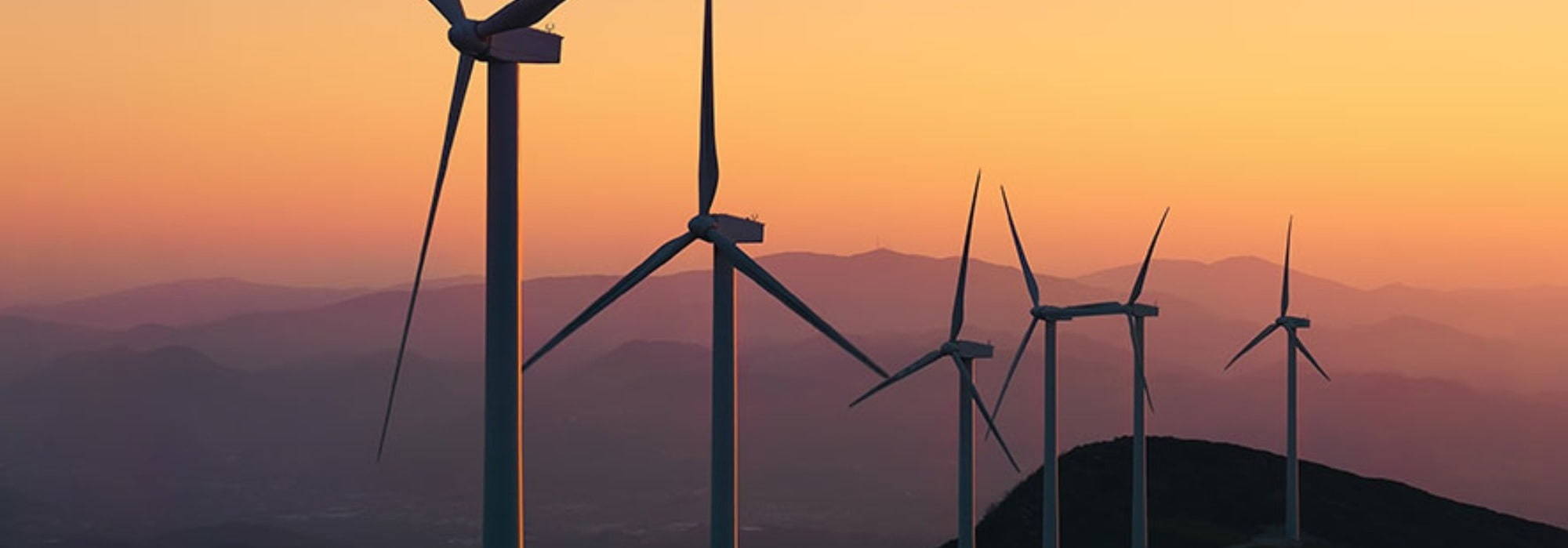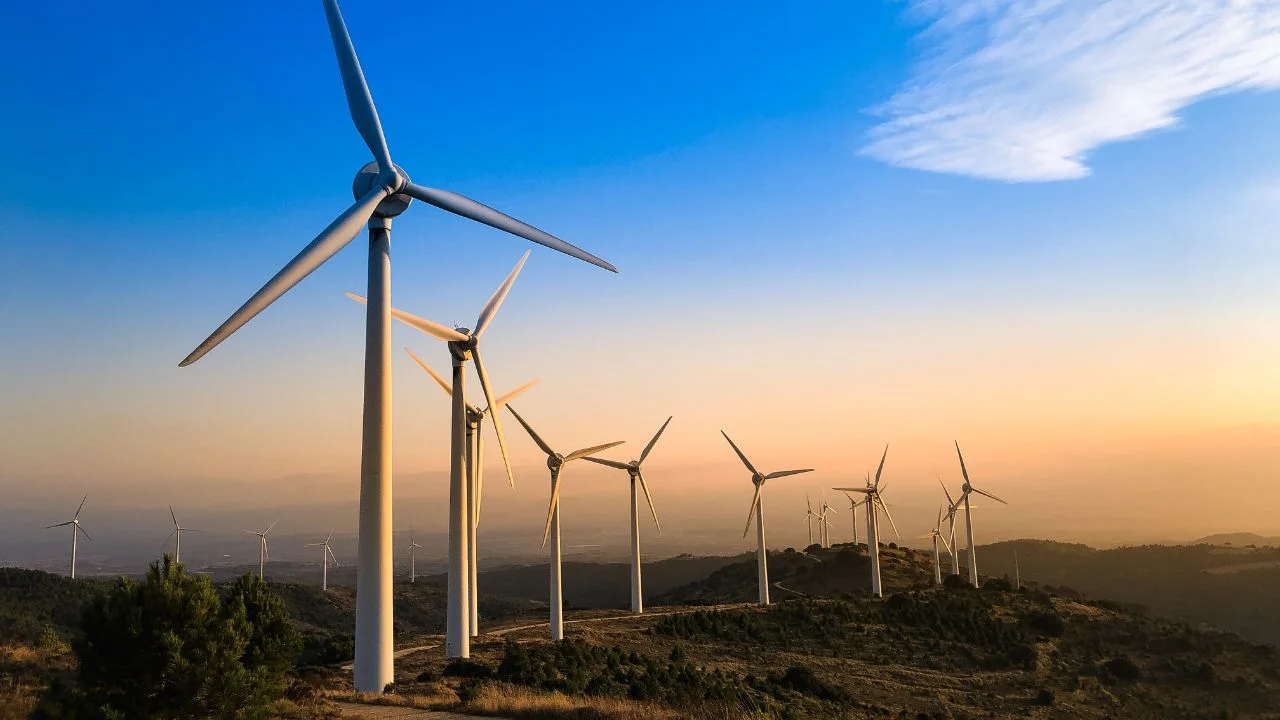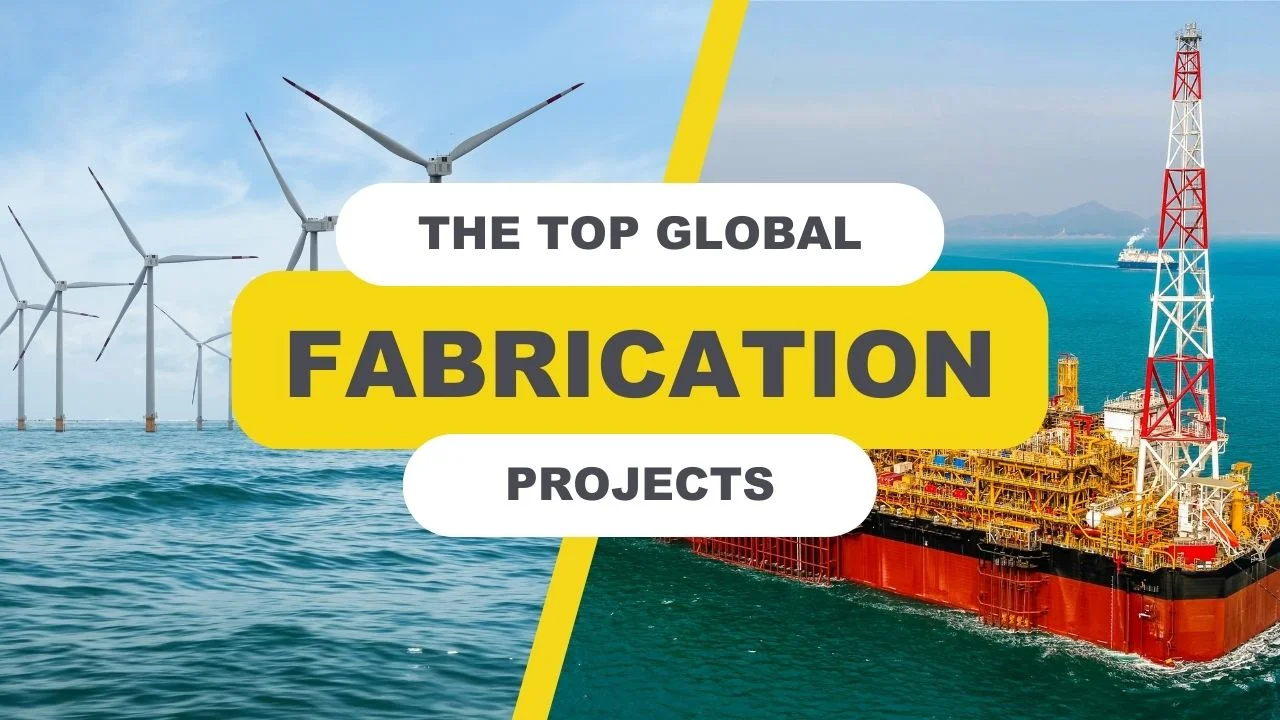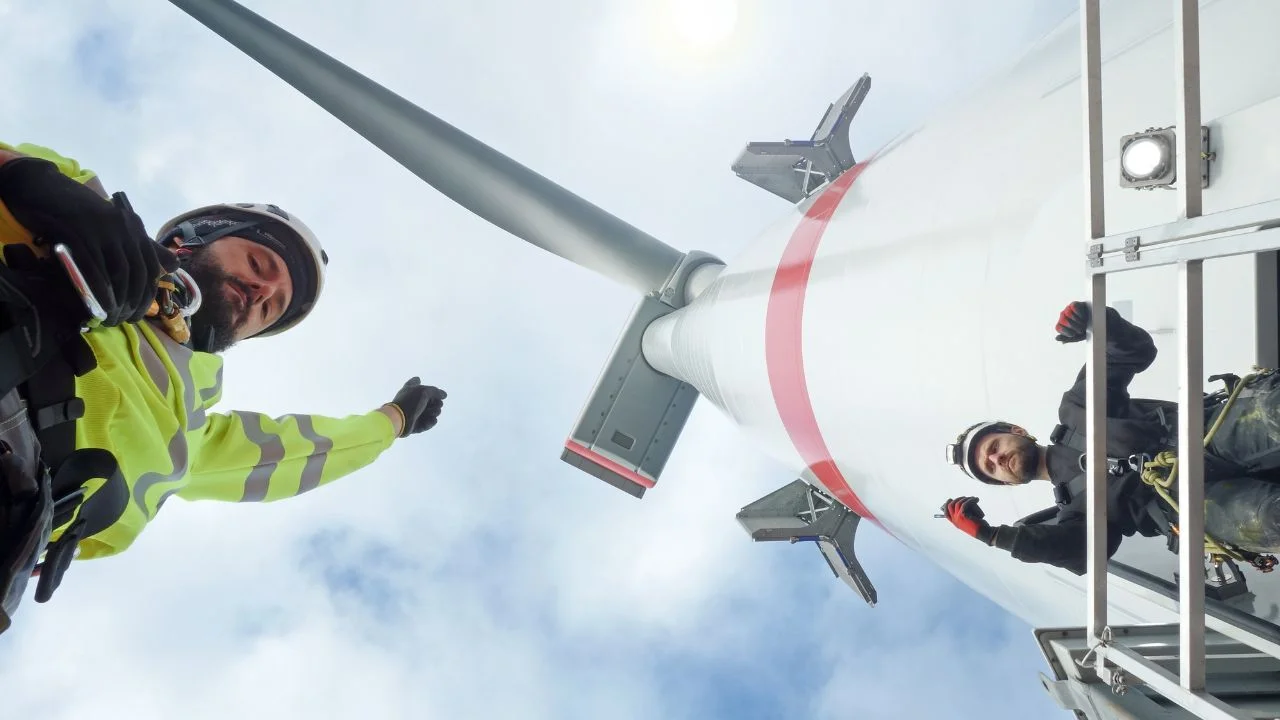Seven Of The Biggest Renewable Energy Projects In The World
27 May, 20206:17The demand for renewable energy is growing every day, with countries around the wo...

The demand for renewable energy is growing every day, with countries around the world pushing for a greater dependence on sustainable power sources. To achieve these goals, revolutionary projects have been constructed on massive scales, utilising innovative techniques to generate unprecedented amounts of solar, wind, hydroelectric and geothermal power.
As newer technologies begin to create power on greater scales, they're creating a large number of renewable energy job opportunities.
We’re celebrating seven of the biggest renewable projects currently in operation:
Tengger Desert Solar Park - China
China has more solar energy capacity than any other country in the world, thanks to its vast resources and commitment to clean power.
China's government has pledged to meet the goals of the Paris Climate Change Accord and vowed to spend $360bn on renewable energy sources by 2020 - creating 13 million jobs in the process.
The aim is that by 2030 China will draw 20% of its power from renewable sources. However, so far solar energy meets just 1% of current demand. To increase this, China is utilising its vast deserts which cover around 20% of the country.
The Tengger Desert solar park is often referred to as the “Great Wall of Solar” - the sprawling plant covers an area of 43km2. It’s located in a 1,200km2 stretch of open desert near Zhongwei in the Ningxia region of Northern China.
Developments like this benefit from the decrease in production costs of photovoltaic panels over the last few years. With 60% of the world's solar panels being made in China, the country is in a prime position to make the most of the technology.
The park is continuing to expand, but according to the most recent reports it currently comprises over 20 integrated photovoltaic power plants, generating up to 1547 megawatts - more than any other solar farm in the world.
Ivanpah Solar Facility - USA
Three solar thermal power plants cover 14.2km2 of the California/Nevada Border in the Mojave Desert.
The plants use a power-tower concentrated solar system developed by BrightSource. Rings of software controlled mirrors reflect sunlight to a 459 foot tower that sits in the centre. This concentrated sunlight heats water stored at the top of the tower to create steam.
From there the system works like a traditional power plant. The steam is piped from the boiler to turn a turbine and generate electricity. Transmission lines then carry the power to over 140,000 homes each year throughout California.
300,000 mirrors are used between the three units, each measuring 10ft wide by 7ft tall. They have to be perfectly angled in order to maximise the energy focus, so each one rotates to track the sun throughout the day. Construction of the project took three years, beginning in October 2010 and ending in December 2013, and at its peak involved 2,636 construction workers and support staff.
Together the three fields are able to generate up to 392MW of power. The equivalent capacity from a fossil fueled plant would emit up to 400,000 metric tons of carbon dioxide per year. It also employs a dry-cooling process which uses air instead of water to condense steam, in a closed-loop system allowing it to use 95% less water than other solar thermal systems.
Sihwa Lake Tidal Power Station - South Korea
Along the West Coast of South Korea is the 43.8km2 artificially constructed Sihwa Lake - built using a 12.7km long seawall at Gyeonggi Bay in 1994 as part of a land reclamation project. Sluice gates in the seawall periodically open to circulate seawater and prevent contamination in the lake.
The Tidal Power Station was constructed in 2004, becoming operational in 2011, to make use of the inflows. The Station has the added bonus of helping to boost water circulation by 200%.
Ten 25.4MW submerged bulb turbines are rotated by water flowing in from the West Sea twice at day at high tide. As the tide ebbs the sluice gates are closed, which isolates the lake at its lowest level.
The tidal barrage is the world’s biggest tidal power installation and cost $560 million to construct. It generates 552.7GWh of power each year - enough to power a city of 500,000 people. The equivalent output of an oil-powered station would create 315,000 tons of CO2.
Walney Wind Farm - UK
Costing over £1 billion to build, the Walney Offshore Wind Farm is the largest in the world, stretching over an area of 145km2 (55 square miles) in the Irish Sea.
Located 14km west of Walney Island, off the coast of Cumbria, the wind farm features a total of 189 wind turbines. Each turbine stands 190m (623ft) tall and has a capacity between 7MW and 8MW.
The farm was built in three separate phases, with construction of phase 1 beginning in 2010 and completion of the third stage (The Walney Extension) taking place in September 2018.
It has a total capacity of 650MW, enough to power 600,000 homes in the UK. It has an expected lifespan of 25 years and employs around 250 people for operation and maintenance
Roscoe Wind Farm - Texas
627 wind turbines are spread across 400km2 of Texas, crossing four separate counties. The complex is a collaborative project between 300 land owners and renewable energy companies including Mitsubishi, General Electric and Siemens AG. Together these make one of the largest onshore wind farms in the world.
Construction of the project involved over 500 workers and cost over $1 billion. Most of the land is leased from dryland cotton farmers. Construction began in May 2007 and involved four phases. The completed farm was fully operational by October 2009.
One turbine was installed every day during construction, each standing between 350ft and 415ft tall and spaced 900ft apart.
781.5MW of electricity is produced - enough to power 230,000 homes. This is around 10% of the total Texas power market, which has a capacity of 7,907MW of wind power generation. It’s estimated that the wind farm saves around 375,000 tons of greenhouse gas emissions.
Texas is the USAs leading state in renewable energy development, with its wind generation capacity at around four times that of California, in second place.
The Geysers - California
115km north of San Francisco, the midst of the Mayacamas Mountains, is the geothermal field known as The Geysers.
Covering 30km2 (45 square miles) along the border of Sonoma and Lake County, these naturally occurring steam field reservoirs are thought to be caused by a large magma chamber located four miles below the surface and spanning eight miles in diameter. Fractured and permeable rock around this chamber allows water to get close enough to the magma to heat and turn into steam, which is forced back to the surface.
Energy companies such as Calpine have capitalised on this natural phenomenon to create the world’s largest complex of geothermal power plants. 22 facilities are located on the field, drawing steam from over 350 wells.
19 of these plants are owned by Calpine, one by US Renewables Group (USRG) and the remaining two jointly owned by the Northern California Power Agency (NCPA) and Silicon Valley Power.
The first geothermal wells were drilled at the site in 1921 and produced 250KW of electricity. Now the fields deliver a total power capacity of 1517MW, producing 60% of the power demand of the coastal region between the Golden Gate Bridge and the Oregon state line.
Waste water is now pumped in to the fields to create more steam, increasing the amount of power that can be generated. The Geysers account for 20% of all green power generated in California.
Three Gorges Dam - China
The largest hydroelectric dam in the world is so huge that it’s been said that a shift in its total water mass can literally slow the rotation of the planet.
Built across the Yangtze river near the town of Sandouping in Western China, the dam was first envisioned in 1919 by Sun Yat-sen, who believed such a project could be capable of generating up to 22GW. Proposals were regularly put forward in the decades ahead, with Mao Zedong supporting the project and even writing a poem about it in 1956. However it wasn’t until 1992 that the project was finally approved, with construction commencing on December 14th 1994. Almost 100 years after first envisioned, and 18 years after beginning construction, the Three Gorges Dam finally became operational in May 2012.
In total, the project cost 148.31 billion yuan (£16.8 billion). Construction used 463,000 tonnes of steel - enough to construct 63 Eiffel Towers - and moved 102,600,000m3 of earth. It stretches over 2km in length, and stands 185m high.
The dam sits at the end of a series of steep canyons running 630km in length, at an average width of 1.3km to create a reservoir with a maximum capacity of 39.3 billion cubic metres. The water flows over 32 main electricity producing turbines - 14 on the North side, 12 on the South and 6 underground - each of which is capable of producing up to 700MW of power.
In October 2010 the reservoir reached its total capacity for the first time. With the dam working at full capacity it can generate a total output of 22,500MW - making it the world’s largest power station.
Though construction and costs were often controversial, at full capacity the dam can produce enough energy to offset 31 million tonnes of coal consumption per year, reducing greenhouse gas emissions by 100 million tonnes per year. On average it provides around 1.7% of electricity demand throughout China.
It also increases the shipping capacity of the Yangtze River sixfold, allowing barges to be used instead of trucks which is estimated to reduce carbon dioxide emissions by ten million tonnes and lowering transport costs by 25%. It also reduces potential flooding downstream through industrial areas, farmland and large cities including Wuhan, Nanjing and Shanghai.
Launch your innovative renewable energy project with NES Fircroft
NES Fircroft is a world-leading provider of workforce solutions to the global energy industry, including businesses dealing in Wind, Solar Power, Hydropower, Energy from Waste and Alternative Energies. We will support the logistics of your project and enable access to the world's best technical and engineering personnel, whether you are looking for contractors or permanent staff.
We also offer industry-leading assignment support services for contractors looking to embark upon their next energy assignment.










